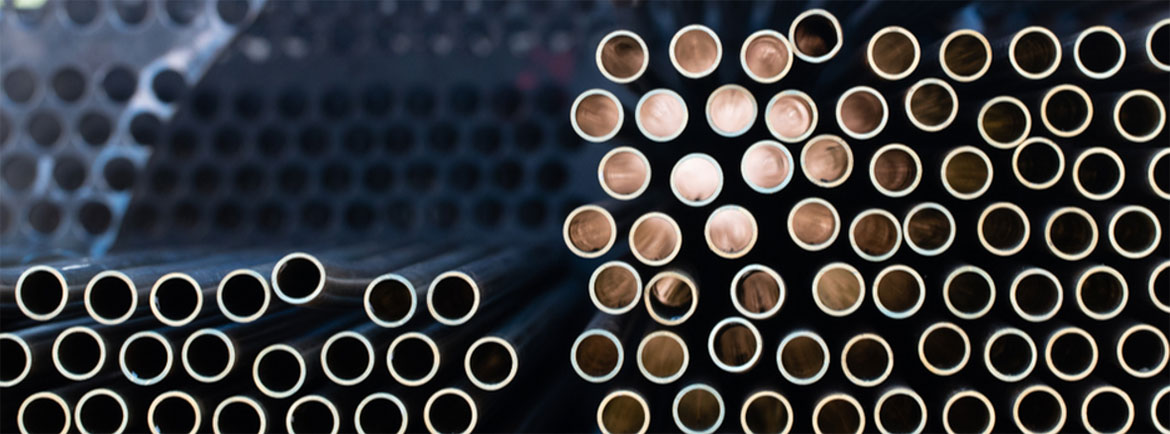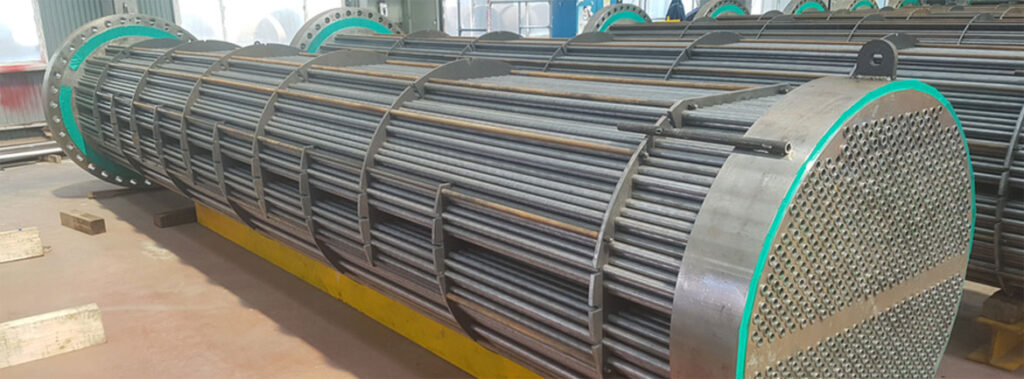
The Top Oil and Gas Applications for Heat Exchangers
Like any other industrial process, oil and gas production is associated with generating significant amounts of heat. Unregulated industrial processes can result in detrimental temperature spikes affecting machinery, transport channels, and even the product itself. To maintain optimal thermal conditions in oil and gas systems, heat exchangers are often employed.
So, we know heat exchangers play a crucial role in oil and gas production processes. But which ones, exactly? Let’s go over the top O&G processes that utilized heat exchangers.
What Is A Heat Exchanger?
A heat exchanger is a piece of industrial equipment uniquely designed to conduct thermal energy between two media (typically a heated process fluid and a cooling liquid or gas). The fluids in contact may or may not be separated by a barrier. This depends on the miscibility, volatility, and possibility of process contamination.
How Does A Heat Exchanger Work?
Like any other temperature regulating device, heat exchangers utilize basic principles of thermodynamics to achieve process cooling. So how does a heat exchanger work? The answer is quite simple. Heat exchangers use the conduction of thermal energy from a heated process to a coolant to dissipate generated heat.
Classifying Heat Exchangers
Heat exchangers are categorized using the three primary criteria outlined below:
- Nature of the heat transfer process
- The state of the process/coolant fluids
- Heat exchanger design and fluid flow arrangement
Nature of The Heat Transfer Process
Direct contact thermal exchangers place the process fluid and the cooling fluid in direct contact within their channels. This variant of heat exchanger is only ideal for use with non-volatile liquids where there is no risk of contamination or cross-reactivity.
By contrast, indirect heat exchangers keep the heated process fluid and the coolant separated by a physical barrier. In these cases, heat transfer is by radiation or convection.
The State of the Process/Coolant Fluids
Depending on the phase of the process fluid and the coolant fluids, heat exchangers can be classified as liquid-gas, liquid-solid, or gas-solid.
Heat Exchanger Design and Fluid Flow Arrangement
The direction of flow of the two fluids in contact is another way to classify heat exchangers. Thermal exchange units can be classified as parallel flow, cross-flow, or counter-current flow depending on the direction in which the process fluid and the coolant go. The intrinsic design will determine which of the above configurations is in operation for every heat exchanger.
Where Are Heat Exchangers Used?

Several oil and gas industry processes depend on the heat’s rapid generation or dissipation to maintain optimal productivity. Heat exchangers are commonly employed in the following oil and gas systems:
- Heat/oil transfer systems
- Fuel gas conditioning systems
- Cold ammonia flow control
- Lube oil systems
- Selective catalytic reduction (SCR) Units
Heat Exchangers and Hot Oil/Heat Transfer Systems
It is important to note that not all heat exchanger processes are aimed at temperature reduction. In the case of hot oil/heat transfer systems, the objective is to provide heat to drive an associated industrial process. Heat transfer systems are designed to store and deliver the thermal energy in heated exchanger fluid to process systems on demand.
Heat Exchangers and Fuel Gas Conditioning Systems
Skid-mounted fuel gas conditioning systems represent another industrially useful application for heat exchangers. During routine operation, fuel gas conditioning systems generate a lot of heat to ensure a steady flow of dry, high-purity fuel. These actions ensure the longevity of system components. As a result, heat exchangers are often incorporated into fuel gas systems to provide an optimal thermal environment for their smooth operation.
Heat Exchangers and Cold Ammonia Flow Control
Flue gas regulations are often quite stringent, requiring industrial operators to carefully monitor the quality of gases being released by their processes. Cold ammonia flow control units, which the quantity of ammonia being introduced into a stream of flue gas/air, utilize a pressurized and heated process involving an industrial heat exchanger.
Heat Exchangers and Lube Oil Systems
Lube oil systems integrate all the materials and equipment needed to generate high-quality lubricants in a thermally powered blending process. Critical components of a proper skid-mounted lube oil blender include:
- Mixers
- Kettles
- Electrical switchgear
- Instrumentation
- PLC controls
Heat exchangers and SCR Units
Selective Catalytic Reduction (SCR) units are usually integrated with ammonia flow control units to minimize the industrial emission of NOx in flue gases. Both these processes utilize heat exchange devices to achieve NOx removal, therefore, allowing plant operators to remain compliant with municipal industrial emission standards.
Partnering with the Right Heat Exchanger Manufacturer
Optimizing industrial thermal processes is critical to the success of any operation. This is why we are dedicated to providing you with the best heat exchanger for your unique process.
Founded in 1979, IFS is a modular process skid provider for liquid and gas process systems. We serve our customers by designing and manufacturing a wide range of modular systems for several industries.
To get a quote, please contact us today!

